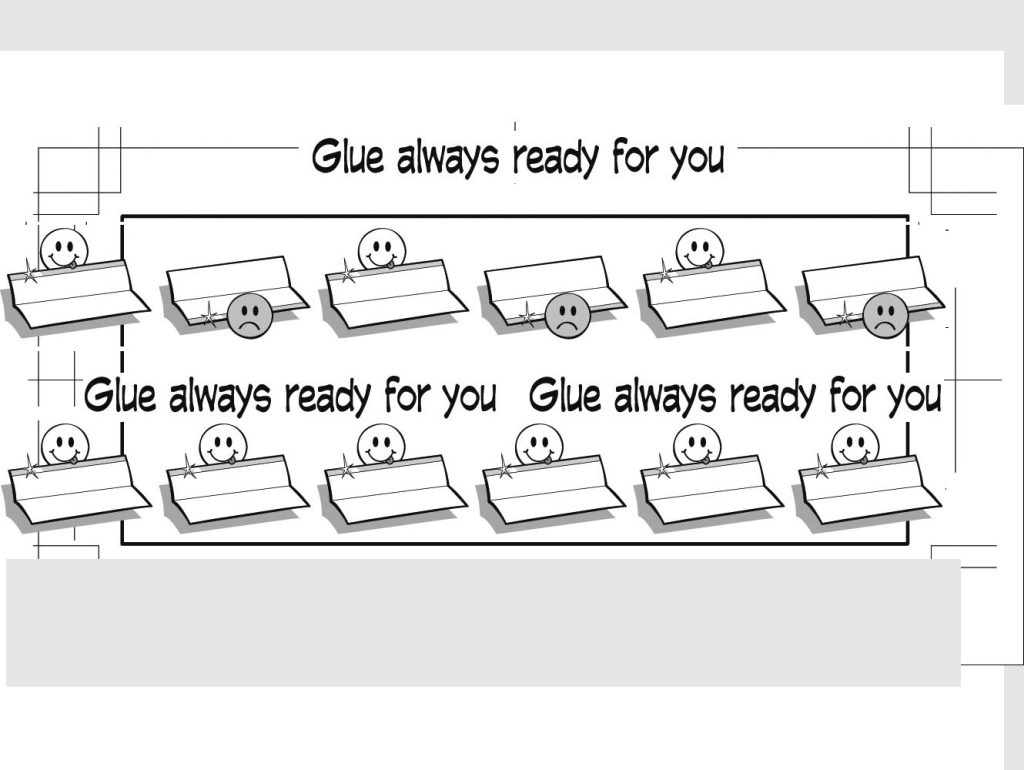
RYO and MYO products continue to present remarkable opportunities to the companies supplying these segments.
By George Gay
It has long been debated whether smokers choose roll-your-own (RYO) products over factory-made cigarettes simply because they can save money that way or whether there are other factors in play, most of which revolve around the idea of product customization. One thing that seems certain, however, is that if some smokers want to customize their RYO cigarettes, now is a great time for them to get creative. The product combinations that are possible by putting together the huge range of papers, filters and tobacco now available must be immense and growing.
This is not to say that RYO is about to experience a boom; taxation and regulation will not allow that to happen. But this category, being lifted by the current cost-of-living crisis affecting many people and by the legalization of recreational marijuana use in a growing number of jurisdictions, is likely to punch above its weight for some years to come.
Here, we look at the state of various aspects of the RYO and make-your-own (MYO) sectors: machinery, papers and filters.
Machinery

Although many cigarettes are hand rolled mainly as a way of saving money, whenever I think of the hand-rolling process, I imagine somebody involved not in an economic activity but in an artistic undertaking. This idea might be a little romantic, however, given that many hand-rolled cigarettes appear less than beautiful, so perhaps I am talking more of a craft than an art, an activity akin to constructing dry stone walls or making hurdle fences, which are often beautifully irregular and, in certain instances at least, economically necessary.
Of course, there is something highly misleading in all this because, unlike the people making dry stone walls and hurdle fences, who are working with crude materials, the person hand rolling a cigarette has in her hands elements that have been produced using advanced designs and technology—elements such as ideally formed, long-stranded fine-cut tobacco and papers and filters fine-tuned for the individual’s preferred choice of cigarette.
And what often gets forgotten is the technology that goes into producing those tiny booklets of hand-rolling papers. They might look simple and insignificant, but the processes necessary to produce them are far from it. Where bobbins of paper have not been pre-gummed, they must have glue applied to one side, they must be cut to length, interleaved, packed into booklets and the booklets included in multi-packs.
And I must confess that, in describing this process, I have paid too little attention to part of the undertaking that is technically challenging: interleaving the cut papers. I was reminded of this when Luc Van de Perre, the founder and owner of BeMade, described how his company had a patented interleaving method, ReadyToRoll, which ensures that when individual leaves are pulled by the consumer from the booklet, the gummed side of the paper always comes out pointing upward. At present, says Van de Perre, 99 percent of paper booklets deliver alternate leaves gummed-side up and then gummed-side down, so half must be turned over by the consumer.
Does this matter? I think it does, if for no other reason than it allows a smoker with impaired vision, who has misplaced her spectacles or is in conditions where the light is poor, to roll a cigarette with confidence. It provides, also, the assurance that she is not going to waste a paper or, even worse, lick the wrong side of a lightweight paper, which will cause it to stick, but only up to a point—that point probably being when the cigarette is lit.
It also demonstrates that even in what some might regard as a backwater segment of the tobacco industry, attention is being paid to the smallest details. The smoker of hand-rolled cigarettes is being treated as important.
In fact, such attention to detail is now at the forefront of BeMade’s activities. The company, which was founded in 2005 and which has a background in booklet production, used that manufacturing experience to develop a fully flexible maker/packer that can produce a full range of booklet formats and pack them in a variety of display boxes. But Van de Perre said that whereas his company had in the past taken machinery projects from start to finish, it was now concentrating on machine developments and installations while working with a bigger partner company in building the machines.
BeMade has also come up with a service strategy recognizing that while its booklet-producing customers are geographically widely spread, it is operating in a relatively modest segment. “Our target is to make sure our customers, booklet producers, get all the tools needed to organize service and maintenance operations in-house or through local support,” said Van de Perre. “This means also that we are prepared to sell the know-how necessary to make our customers independent. All new customers are provided with whatever is necessary to make them self-supporting, though we can also support them via direct web connections to their machines.”

Paper
Of course, to produce booklets, you need paper, and, asked about the main RYO market drivers, a spokesperson for SWM and Botani, Anne Laure Jaeckel, product manager of rolling papers at SWM, said the past few years had been all about product research and collaborative developments as their customers had focused on delivering to consumers the best smoking experiences by offering them thinner and lightweight papers. Another important trend had been delivered through developments in botanicals, especially hemp, which had become an essential material in a matter of a few years. In the future, the transparency of papers would be a key feature while the provision of new and exciting colors would also take center stage.
SWM and Botani comprise the Engineered Papers division of Mativ, with SWM serving the tobacco industry and Botani serving the emerging global cannabinoids market.
One question that arises is whether RYO has a future given the array of next-generation tobacco and nicotine products that have emerged recently and given people’s apparent tendency to embrace new technology generally. But Jaeckel seemed unconcerned. While, as always in business, things were changing, this did not signal the end, she said. The change being brought in by the trend toward the legalization of the recreational use of cannabis in many countries was a positive, leading to, among other things, an increase in demand for rolling papers and pre-rolled cones, especially in the U.S. All that was needed now to take things forward in a sustainable way was the introduction of uniform legislation governing product standards.
But some things would remain largely unchanged. For some consumers, RYO had always been and would remain just what they needed—a widely available and cost-effective product. Rolling papers had been invented in the 19th century, and, in part, it was the proof of the product tied up in this history that appealed to many consumers, something to which SWM could attest since its factory in the south of France had been active for 150 years and had witnessed the launch of one of the first rolling paper brands, JOB.
Generally and historically speaking, wood-based bleached materials have gone into making tobacco rolling papers, but Jaeckel said that customers looking to the cannabis market were preferring thin, unbleached, colored or hemp-based papers. Of course, the market for papers, while being strongly influenced by consumer preferences, was also governed by legislation, she added.
The base paper for rolling-papers, Jaeckel said, was supplied in rolls, bobbins and reams, depending on the converting capabilities of customers and on end use applications—for instance, interleaved or flat booklets, or even pre-rolled cones and MYO tubes. All grades of paper could be offered pre-gummed and with filigree patterns, which, along with color options, provided for a wide variety of brand differentiation. And for companies that were only brand owners, SWM and Botani could supply their paper through a network of partner converters capable of transforming it into the required forms.
The range of experiences on offer to the consumer is certainly huge. Indonesia-based The Rolling Paper Company (TRPC), for instance, offers worldwide a wide range of papers, including those made from bleached wood, unbleached wood, unbleached hemp, alfalfa and bamboo. Papers can be watermarked, printed or colored, and the company’s offer also includes blunts, cones and printed cones, all manufactured under one roof using machinery and paper imported from Europe.
TRPC, which has been in business since 2008, produces its own papers under brand names such as SmokeBox but also contract manufactures for other companies.
Ashwyn Daryanani, the founder and owner of TRPC, is confident about the future. In reply to emailed questions, he said the main drivers of the rolling paper business in recent times had been the legalization of the recreational use of marijuana in various jurisdictions and the rising prices of factory-made cigarettes just about everywhere. And, he added, the trends toward the legalization of marijuana use and rising cigarette prices would continue in the future, boosting demand for rolling papers.

Filters
While Filtrona identifies consumer economics as being the key driver for the MYO category, it sees product customization mainly driving the RYO sector. And the company, which develops and manufactures filters for all types of smoking products, including both the categories under review, predicts that two main factors will drive the RYO/MYO market for the next two years to three years: product customization, and sustainability in respect of both filters and packaging. RYO smokers would be drawn to innovative filter shapes, formats and additives, said Hugo Azinheira, global director of innovation and ESG [environmental, social and governance]. At the same time, there would be a growing need for customized packaging that was more sustainable and that delivered improved product freshness when compared with what was on offer now.
The second driver, meanwhile, meant it was vital for Filtrona to extend its ECO range of filters to RYO/MYO and to work with its packaging suppliers to develop and introduce more sustainable packaging materials.
“The industry’s shift from acetate filters to more sustainable alternatives presents us with one of our biggest opportunities,” said Azinheira in an email exchange. “Our growing ECO range comprises more than 12 innovative plastic-free filters, providing solutions that address single-use plastic bans by using sustainable, biodegradable and plastic-free non-woven materials. All our ECO filters are suitable for use in RYO and reduced-risk product categories as well as ready-made cigarettes.
“We are also working with suppliers to develop and qualify new materials with a lower carbon footprint. We believe that it requires an industry-wide effort to support our customers in their ESG journeys; therefore, we are collaborating with a wide array of suppliers.”
Meanwhile, Azinheira said, because demand for both RYO and, especially, MYO tended to grow when adverse economic environments prevailed, the market for both had been relatively stable during the past five years to six years. But with MYO being a more volatile category, there was higher growth potential in RYO, though both were expected to remain niche categories.
Overall, the RYO and MYO categories would follow the main industry trends, including in respect of the growing cannabis category in North America, for which special filters were being developed and commercialized. While RYO would remain a niche product, demand for it would grow in markets where hemp and cannabis were legalized, but it was important to keep in mind that, within the EU, the new Tobacco Products Directive would impact these new categories.












